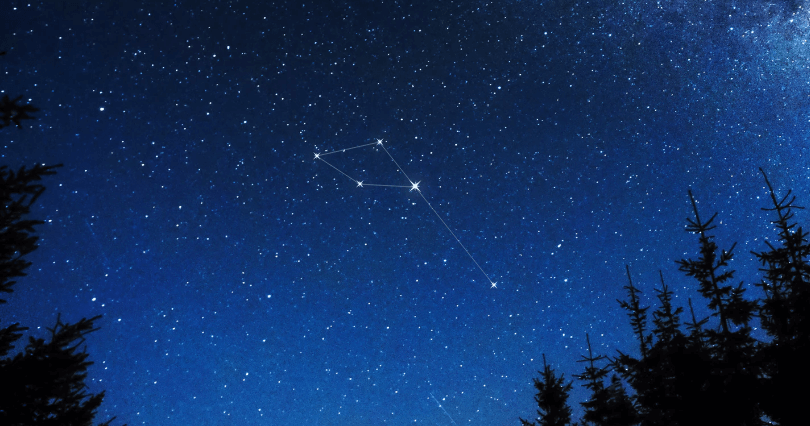Summary: Delphinus is both a fun summer constellation and a racy character in mythological Greek stories of seduction and betrayal.
Symbolism: Dolphin
Mythology: There are two myths associated with the constellation Delphinus. According to the first, Greek god Poseidon wanted to marry Amphitrite, a beautiful nereid. However, wanting to protect her virginity, she fled to the Atlas mountains. Poseidon then sent out several searchers, among them Delphinus, the dolphin. Delphinus accidentally stumbled upon her and was able to persuade Amphitrite to accept Poseidon’s wooing. Out of gratitude, the god placed the image of a dolphin among the stars.
In the other myth, it was Apollo, the god of poetry and music, who placed the dolphin among the constellations for saving the life of Arion, a poet and musician, whose skill with the lyre made him famous in the 7th century BC. Arion was sailing back to Greece after a concert tour of southern Italy when the sailors who were also on the ship started plotting to kill him and take the money he had earned. The sailors granted Arion’s wish to play his lyre one last time. The music drew several dolphins to the ship. Arion jumped overboard. One of the dolphins saved him and carried him all the way back to Greece. Later, Arion confronted the sailors and had them sentenced to death. In this version of the myth, Apollo placed the dolphin next to the constellation Lyra in the sky, and Lyra represents Arion’s lyre.
When is it visible? Delphinus is visible all summer and reaches it peak in late August.
How to find it? Look for a dim triangle with a tail, high in the south to southeast. Once you find it, you will remember it, since Delphinus truly looks like a dolphin. One of our favorites, because it reminds us of all of the fun summer watersports. Delphinus is among five small Summer Triangle constellations: Lyra, Vulpecula, Sagitta, Delphinus and Equuleus.
History: It is one of the Greek constellations, first catalogued by the Greek astronomer Ptolemy of Alexandria in the 2nd century CE. The stars of Delphinus were also cataloged in Chinese astronomy, Polynesian culture, and Hindu astrology. Only 5 of the stars in the Delphinus constellation have been named by the IAU, which leaves all of the rest of the Delphinus stars to be named as gifts at Name a Star.



